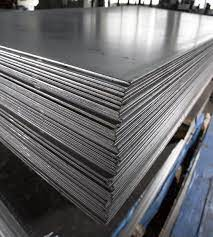Tube bending machines are a stalwart in many industrial settings, bending metal sheets and tubes into the shapes required for fabrication, automotive and other industrial purposes.

Electromechanical tube bending machines have an electrochemical arm for bending metal, which is operated using a pinion and crown wheel and powered by an electric motor.
Hydraulic tube bending machines use a hydraulic arm that is chain driven with two cylinders to bend metal.
Although the machines use different technologies to operate, they share a number of features. They also have some differences, and by understanding where the technologies intersect, it becomes easier to determine which is most appropriate to suit your needs.
If you need help in choosing, Euromac bending machines are available in both electromechanical and hydraulic versions from a number of specialists such as www.cotswold-machinery-sales.co.uk/euromac-bending-machines/horizontal-bending-machines, who can help you to determine which machine is best suited to your intended purposes and space requirements.
1. Ease of operation.
Once set up, both electromechanical and hydraulic tube bending machines are easily operated following manufacturer instructions. Hydraulic machines have the advantage of automatic lubrication but electromechanical ones have fewer moving parts to lubricate.
2. Efficiency.
Tube bending machines provide greater accuracy in shorter timescales than using a traditional non-automated system to bend metal and tubing. Electromechanical machines offer excellent economy, as they use less oil and power than their hydraulic counterparts, however, hydraulic machines have the edge in terms of power.

3. Adjustment.
It is very easy to adjust the tool setup on electromechanical tube bending machines to suit the intended purpose, however, hydraulic machines are usually well suited to a wide range of applications with a number of bending radii programmes available.
4. Size.
Hydraulic machines are larger than their electromechanical equivalents. They are more robust and are ideally suited to heavy duty applications. If a tube bending machine is required for use in an area with limited space, an electromechanical tube bending machine may be more appropriate.
5. Productivity.
Where large scale production is required, selecting a tube bending machine that is Computer Numerically Controlled (CNC) is of benefit as it eliminates human error and increases speed Both hydraulic and electromechanical machines are available with computer controls.
Ultimately, you should choose the tube bending machine that best suits your intended purpose, operating environment and budget.




